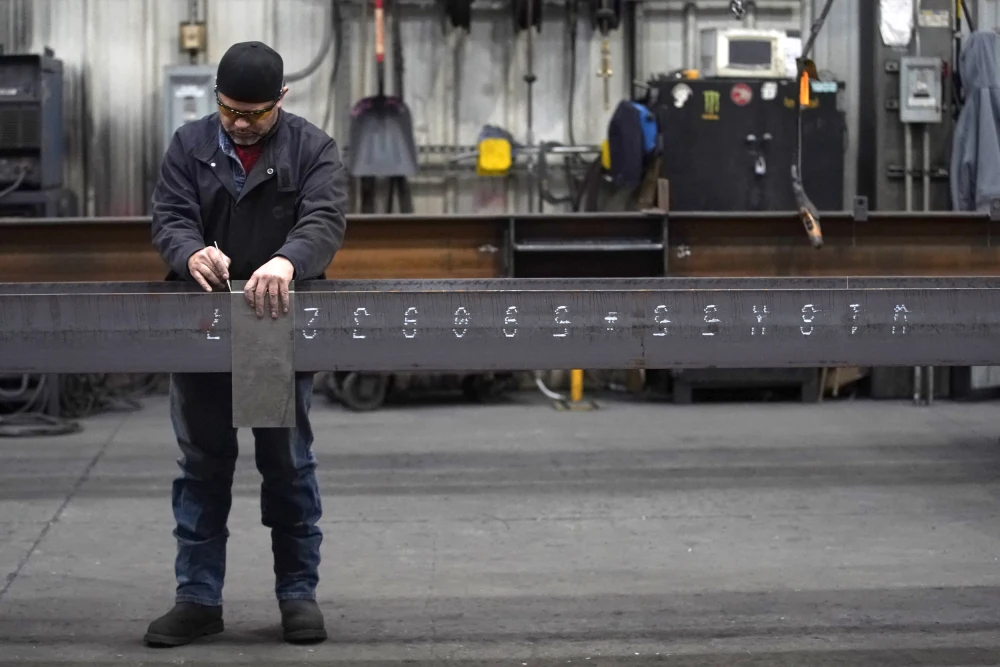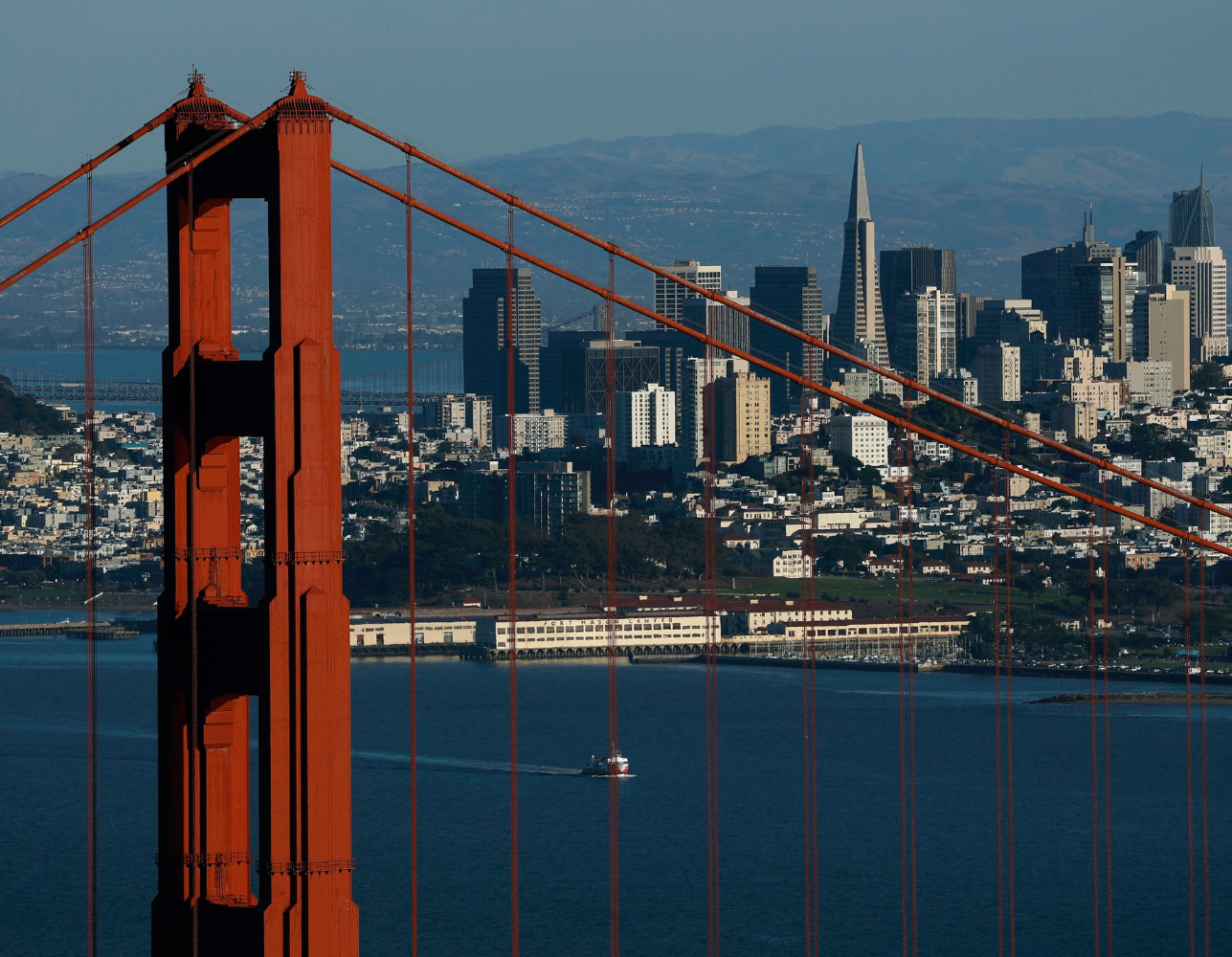Tariffs are costs imposed on goods imported from other countries, but just how effective are they, and at what point do they start hurting the economy?
The question now lies at the heart of the opposing viewpoints of America’s two presidential nominees. While Vice President Kamala Harris is proposing a mix of tax breaks for middle-class Americans and higher taxes on wealthier people in order to bolster growth and reduce the deficit, former President Donald Trump is proposing something more novel: using massive tariffs to both protect U.S. industries and raise revenues.
During Tuesday night’s presidential debate, Trump reiterated his commitment to his plan, in which a 10% tariff would be imposed on all imported goods and a 60% one on goods imported from China.
“Other countries are going to finally, after 75 years, pay us back for all that we’ve done for the world, and the tariff will be substantial,” Trump, the GOP nominee, said, adding his proposed across-the-board 10% tariff would raise “hundreds of billions of dollars.”
Harris, the Democratic nominee, responded that tariffs are effectively a “sales tax” on American households.
In fact, the Biden administration recently imposed its own set of tariffs, while extending ones first levied during the Trump administration. Harris has not explicitly stated whether she would extend them, but on her campaign website, she said she would continue to “support American leadership in semiconductors, clean energy, AI, and other cutting edge industries of the future,” while addressing “unfair trade practices from China or any competitor that undermines American workers.”
The tariff fight, though perhaps wonky, is central to understanding the candidates’ economic visions — not to mention the ways in which third parties have assessed the potential of each plan.
Under the most optimistic outcome, Trump’s tariffs would generate as much as $2.5 trillion over 10 years, according to an estimate by the pro-business Tax Foundation. However, the group calculates that those revenues would cover barely half of the tax breaks and spending proposals Trump has also outlined.
Meanwhile, most forecasts of Harris’ economic plan show a more balanced outcome between increased revenue for the U.S., tax breaks and spending plans.
Tariffs ultimately involve trade-offs. There’s never a line-item on a sales receipt at a big-box retailer for the cost of tariffs, but many economists believe that consumers ultimately end up paying higher prices when tariffs are imposed, because the businesses footing the tariff bill up front end up passing the cost along.
Yet tariffs can also support and even grow American jobs.
Take the tariffs the Trump Administration imposed on washing machines in 2018. According to the Coalition for a Prosperous America, a bipartisan group that advocates for stricter foreign-trade policies, the washing-machine tariffs created over 2,000 jobs and boosted growth in the two southern U.S. communities where Korean appliance makers ended up building factories to circumvent the tariffs.
But an academic paper found that the cost of those jobs worked out to about $815,000 per position, while laundry-appliance prices increased as much as 10%.
The washing machine tariffs were part of a broad new tariff regime Trump imposed in an effort to protect American workers from anti-competitive Chinese trade practices. It resulted in what is generally viewed as a “trade war” involving retaliatory tariffs imposed on American goods.
The “war” died down somewhat in the wake of the pandemic.
But this spring, when the Biden administration embraced its own set of tariff policies, some of them were a continuation of ones imposed by Trump. For example, in May, Biden announced a new set of tariffs on a host of goods including steel and aluminum, as well as semiconductors, electric vehicles, batteries and solar panel parts.
The White House gave a rationale similar to the Trump administration when it announced its tariffs.
“American workers and businesses can outcompete anyone — as long as they have fair competition,” Biden said in a release. “But for too long, China’s government has used unfair, non-market practices.”
Most economists agree that tariffs can support domestic industry. But they can also end up imposing higher costs on the economy as a whole.
In a 2018 interview with the pro-business American Enterprise Institute, Douglas Irwin, regarded as one of America’s pre-eminent trade historians, articulated the dilemma.
“There’s no denying that certain workers in certain industries have been adversely affected as a result of” increased foreign competition, he said, “but when you talk about the productivity improvements that come about as a result of trade, the jobs that are created by exports, and the benefits to consumers, I would say on balance America is better off.”
“But,” Irwin continued, “one can’t deny that certain groups have been made potentially worse off as a result” of lack of protection.
Assessing the economic impact of tariffs often depends on assumptions and calculations that can produce widely divergent results. The Committee for a Responsible Federal Budget, a nonpartisan group, wrote that Trump’s 60% China tariff proposal “would generate as much as $300 billion in net revenue over a decade or lose as much as $50 billion … depending on what share of Chinese imports are replaced with domestic versus foreign goods.”
The committee said the revenue-raising aspect of Trump’s proposal, amounting to $2.5 trillion over 10 years, would have “a sizable fiscal impact and would meaningfully slow the growth of the national debt.”
But the group added that it could have “substantial economic effects” like lower purchasing power and increased business uncertainty.
Proponents of free trade favor negotiating terms directly with other countries — but even then, nations with which the U.S. has friendly arrangements have been accused of violating such deals. Mexico is facing criticism for allegedly breaching a joint steel agreement signed by Trump in 2019, something that has led to U.S. steel plant closures, including in Ohio, New York and most recently on Chicago’s Southwest Side.
“Ohio steelworkers can’t wait any longer for Mexico’s cheating to stop,” Sen. Sherrod Brown, D-Ohio, said in March in a joint statement alongside Sen. Tom Cotton, R-Ark. “Workers are losing their jobs and Ohio companies are losing business now. When Mexico breaks the rules they agreed to, the Administration needs to hold them accountable.”
Officials for the companies responsible for the plant closures have cited U.S. inflationary pressures as the reason for the closings. The fight over the future of U.S. Steel, whose plan to be acquired by a Japanese conglomerate is now at risk of being blocked by the Biden administration, is also related to broader economic forces that have long destabilized American manufacturing.
Nick Iacovella, senior vice president for public affairs at the Coalition for a Prosperous America, a trade group that advocates for tariffs, said opposition to tariffs often falsely assumes that domestic production cannot be improved upon.
He said special-interest groups are often keen to push reports showing that tariffs don’t work as a means of justifying having “spent the last two or three decades offshoring production and jobs to countries where there’s cheaper labor and lower environmental standards.”
“There’s a lot of working-class Americans that have been hurt by offshored production and unfair and illegal trade activity from China,” Iacovella said. “Our communities are being hollowed out, including as a result of free-trade deals.”
But for every job that gets protected as a result of tariffs, there is often another domestic industry that can end up seeing job losses. According to economists at Harvard University and the University of California, Davis, Trump’s steel tariffs ended up affecting businesses that use steel as an “input” for producing finished goods, like auto and equipment makers.
“The job losses created by putting these steel-using industries at risk appear to be substantial, and well in excess of any jobs that may have emerged in the steel-production industry as a result of the tariffs,” they wrote in a 2020 report.




